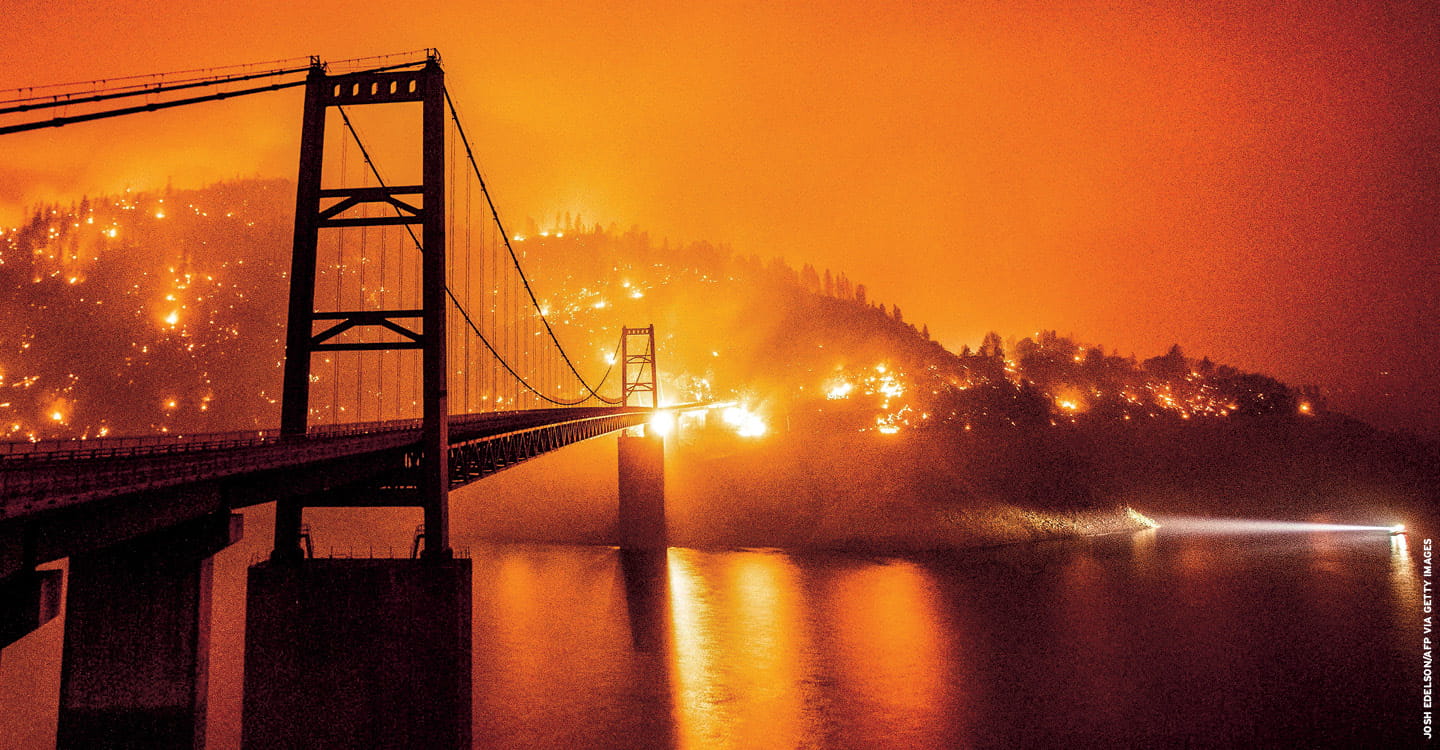Neighborhoods reduced to ash. Toxic air so thick it blocked out the sun and turned the sky an apocalyptic orange. Tens of thousands of people forced to evacuate—many of them living in shelters, dingy motels, or their cars as they awaited word on whether their homes were still standing.
These are just a few of the devastating scenes recently caused by some of the worst wildfires ever recorded in the western United States. As of September 30, multiple megafires had already scorched more than 3.9 million acres in California this year, shattering the state’s previous record from 2018. Combined, California, Oregon, and Washington—the states hit hardest by the wildfires—had seen a land mass almost the size of New Jersey burned by mid-September. And smoke haze reached as far as New York.
Neighborhoods reduced to ash. Toxic air so thick it blocked out the sun and turned the sky an apocalyptic orange. Tens of thousands of people forced to evacuate. Many evacuees living in shelters, dingy motels, or their cars. People hanging in limbo as they awaited word on whether their homes were still standing.
These are just a few of the devastating scenes caused by recent wildfires. They are the worst wildfires ever recorded in the western United States. As of September 30, multiple megafires had already scorched more than 3.8 million acres in California this year. That’s set a new record, shattering the state’s previous one from 2018. California, Oregon, and Washington have been hit the hardest by the wildfires. By mid-September, those three states combined had seen a land mass almost the size of New Jersey burned. And smoke haze reached as far as New York.

